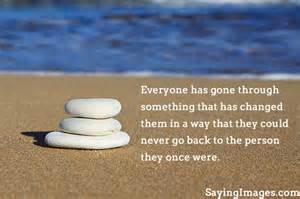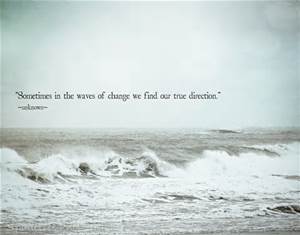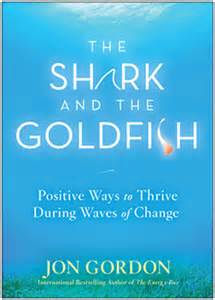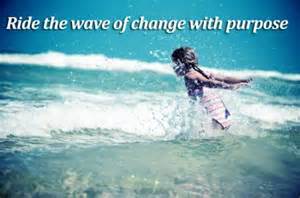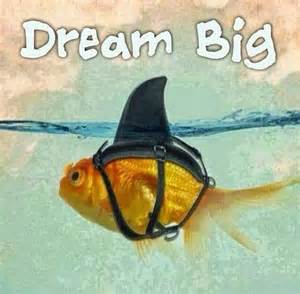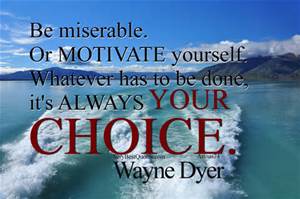“I want things just as they were!” For anyone who has dealt with sudden and/or unexpected change (of either a major or seismic kind), this phrase of wanting things just as they were will sound familiar. Most recently, these words were uttered by the wife of my late cousin, Army, who passed away earlier this year. As summer was fading into fall, she was feeling his loss more than usual. Her favorite season was coming to an end. She was closing up things for the season at the lake house where they spent so much time together. She shared, “For whatever reason that turned out to be incredibly sad. Not because of the end of my favorite season, but I think it just made things seem very real about Army. Maybe I felt like ‘OK, I made it through a summer and survived but I don’t want to do anymore seasons of surviving.’ I want things just as they were.”
Lisa is echoing how so many of us feel when change enters our life and takes something away from us causing us to miss what was. (This is especially true when what is taken away is a loved one.) This is, indeed, one of the things that makes accepting and adjusting to change so hard. Change is all about making something different from what is. It seems that no matter how small or dramatic the change, no matter how expected or unexpected the change, it is accompanied by fear, doubt, uncertainty, and a sense of loss of control. It can be painful, uncomfortable, and difficult to change. It is human nature to want to avoid anything that is painful, makes us uncomfortable, and is difficult. Many changes move us out of our comfort zone, that zone, like a child’s security blanket, where we feel safe and secure. We would prefer comfortable, familiar, and safety. But on this journey we call life change is a constant and something that is unavoidable.
Nothing in life is permanent – not the good; not the bad. While many of us are glad to get rid of any bad in our life, we do like to hold on to the good. When the good is taken away, there is always a reason (and usually one we only understand in hindsight). And, when the good is taken away, our hearts seem to shatter into a bazillion pieces. So, how do we move on when our heart is broken and stuck on what was?
EMBRACE IMPERMANENCE. Since nothing is permanent, we need to treat each day and everything in it as if it will never happen again. Appreciate people, places, and things. Treat the unknown as an adventure (rather than something to fear).

FOCUS ON THE PRESENT. Keep memories of what was close at heart (and in perspective), but we must keep our focus on the here and now. Let go and move on. As Louise Smith says, “You can’t reach for anything new if your hands are still full of yesterday’s junk.”
ESTABLISH YOUR EMOTIONAL CENTER. Ariane de Bonvoisin advises, “Unless you firmly establish your emotional center in the midst of a new condition, you remain psychologically outside it although within it.” Change brings about a slew of emotions (that we often label as either positive or negative depending on how they make us feel). We need to give ourselves time to adjust and orient ourselves to what we are feeling. In establishing our emotional center, we will have ups and downs (think of a roller coaster). There will be periods when we do feel calm and at other times, we will feel despair. As long as we don’t get stuck in any one place, we will make progress toward establishing our emotional center.
DO WHAT YOU THINK IS IMPOSSIBLE. Dealing with different is difficult. We must be courageous and do things we thought were impossible. We need to put one foot in front of the other and tackle the new stuff in the unknown. As Eleanor Roosevelt said, “You gain strength, courage and confidence by every experience in which you really stop to look fear in the face. You are able to say to yourself, ‘I have lived through this horror. I can take the next thing that comes along.’ You must do the thing you think you cannot do.”
BELIEVE THAT CHANGE LEADS TO GOOD. While we are in the midst of a change, especially one we didn’t ask for, it is hard to fathom the reason for that change and it is harder to see the good. But, even those changes that result from what we would consider a “negative” event have something good in them.
In The Language of Letting Go, Melody Beattie writes, “The winds of change blow through our life, sometimes gently, sometimes like a tropical storm. Yes, we have resting places – time to adjust to another level of living, time to get our balance, time to enjoy the rewards. We have time to catch our breath. But change is inevitable and desirable. Sometimes, when the winds of change begin to rustle, we’re not certain the change is for the better. We may call it stress or a temporary condition, certain we’ll be restored to normal. Sometimes, we resist. We tuck our head down and buck the wind, hoping that things will quickly calm down, get back to the way things were. Is it possible we’re being prepared for a new “normal?” Change will sweep through our life, as needed, to take us where we’re going. We can trust that our Higher Power has a plan in mind, even when we don’t know where the changes are leading. We can trust that the change-taking place is good. The wind will take us where we need to go.”
No matter how much our hearts want us to go back to the way things were, we need to allow the “winds of change” to gently move us in new directions. We may have to help our hearts along the journey so that they can deal with what is now our new “normal.” It may help our hearts adjust to the new “normal” if we incorporate our experiences from the way things were into how things are now. In doing so, we will move beyond surviving to thriving.



